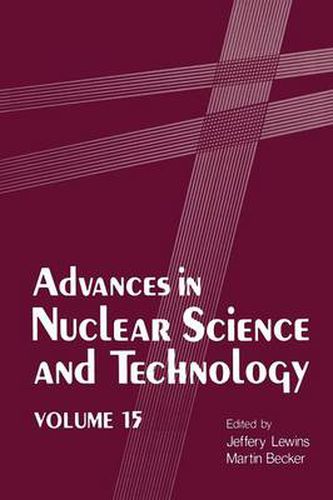Readings Newsletter
Become a Readings Member to make your shopping experience even easier.
Sign in or sign up for free!
You’re not far away from qualifying for FREE standard shipping within Australia
You’ve qualified for FREE standard shipping within Australia
The cart is loading…






This title is printed to order. This book may have been self-published. If so, we cannot guarantee the quality of the content. In the main most books will have gone through the editing process however some may not. We therefore suggest that you be aware of this before ordering this book. If in doubt check either the author or publisher’s details as we are unable to accept any returns unless they are faulty. Please contact us if you have any questions.
Dur previous volume 14 was devoted to an exposition of the topics of sensitivity analysis and uncertainty theory with its development and application in nuclear reactor physics at the heart of the discussion. In this volume, we return to our customary format as a selection of topics of current interest, authored by those working in the field. These topics range from the theoretical underpinnings of the (linear) Boltzmann transport equation to a resume of our ex pectations in what still may be thought of as twenty-first century technology, the world’s fusion reactor program. In the first article of this volume, we have Protopop escu’s analysis of the structure of the Boltzmann equation and its solutions for energy and space-dependent problems of an eigenvalue nature. There long has been a curious folk history effect in this area~ Wigner and Weinberg could de scribe it as what was generally known was generally untrue . This account of the Boltzmann equation surely will show that a rigorous basis for our expectations of certain solutions can be well-founded on analysis. Ely Gelbard’s review of the methods of determining diffusion-type parameters in complex geometries where simple diffusion theory would be welcome has required just as much rigor to determine how such modeling can be made accurate, although to a more immediate and practical purpose. The two articles can be seen as interesting contrasts, facets of the same underlying problem showing apparently different aspects of the same central core.
$9.00 standard shipping within Australia
FREE standard shipping within Australia for orders over $100.00
Express & International shipping calculated at checkout
This title is printed to order. This book may have been self-published. If so, we cannot guarantee the quality of the content. In the main most books will have gone through the editing process however some may not. We therefore suggest that you be aware of this before ordering this book. If in doubt check either the author or publisher’s details as we are unable to accept any returns unless they are faulty. Please contact us if you have any questions.
Dur previous volume 14 was devoted to an exposition of the topics of sensitivity analysis and uncertainty theory with its development and application in nuclear reactor physics at the heart of the discussion. In this volume, we return to our customary format as a selection of topics of current interest, authored by those working in the field. These topics range from the theoretical underpinnings of the (linear) Boltzmann transport equation to a resume of our ex pectations in what still may be thought of as twenty-first century technology, the world’s fusion reactor program. In the first article of this volume, we have Protopop escu’s analysis of the structure of the Boltzmann equation and its solutions for energy and space-dependent problems of an eigenvalue nature. There long has been a curious folk history effect in this area~ Wigner and Weinberg could de scribe it as what was generally known was generally untrue . This account of the Boltzmann equation surely will show that a rigorous basis for our expectations of certain solutions can be well-founded on analysis. Ely Gelbard’s review of the methods of determining diffusion-type parameters in complex geometries where simple diffusion theory would be welcome has required just as much rigor to determine how such modeling can be made accurate, although to a more immediate and practical purpose. The two articles can be seen as interesting contrasts, facets of the same underlying problem showing apparently different aspects of the same central core.